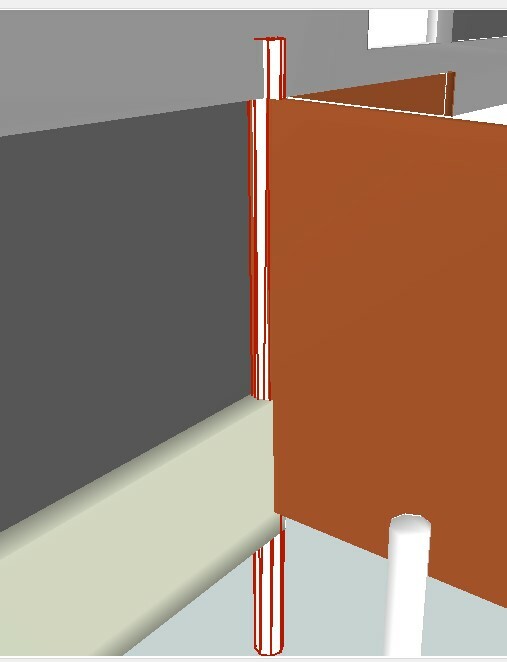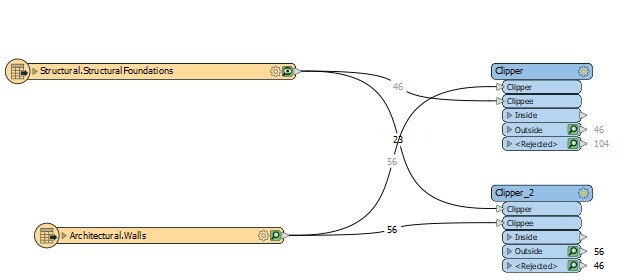Hello everyone!
I have a sample Revit file which contains the basic elements of a Revit file.
I am interested in performing certain geometric tests through the FME, for example:
Are certain elements in a place where they are not supposed to be present,
Is a certain element in the right room,
Does the element of a toilet for example, have enough space according to the standard we will define.
And so on.
When I approached the task, I was sure that the FME would be able to solve it without any problem at all, and then reality hit me.
Any action I try to do with the help of the transformers I know (I work mostly in the GIS world, and know it's a little different from BIM), I do not succeed.
For example:
 I intentionally inserted a foundations between the walls, and I expected to see that when I make a clip between the wall and the foundations, one object will be inside.
I intentionally inserted a foundations between the walls, and I expected to see that when I make a clip between the wall and the foundations, one object will be inside.
 What am I missing here?
What am I missing here?
Do I need to move the 3D objects through another process before the required actions can be performed?
Or maybe it's not the right transponder?
I would be very happy if you could help me
Thanks!
Best answer by virtualcitymatt
View original





